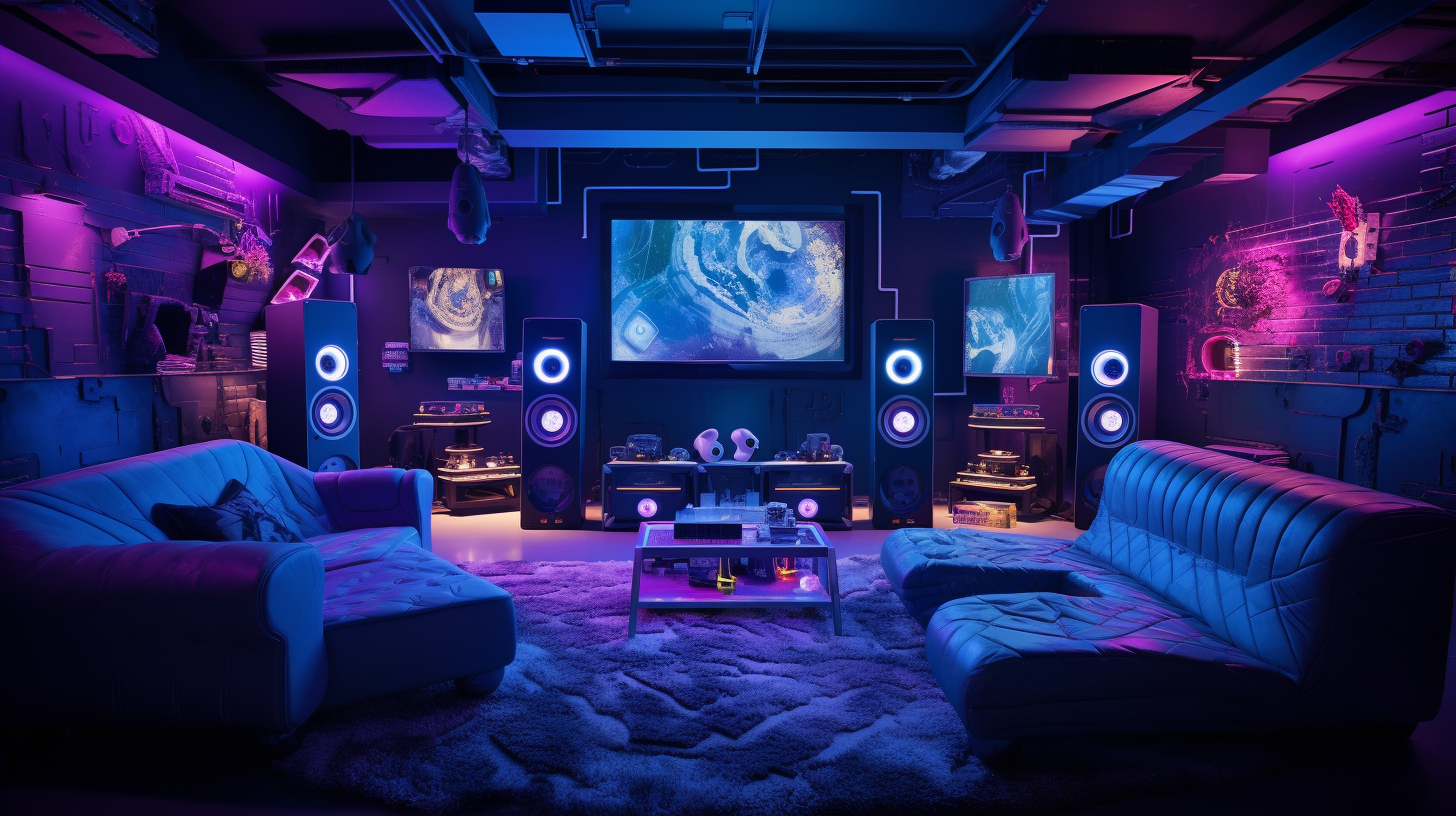Gaming rooms can get loud. Very loud. We’re talking shouts of victory, stomping feet, and subwoofers vibrating the whole house. How do you contain the racket inside four walls?
Properly soundproofing a dedicated gaming room requires treating the walls, floor, ceiling, doors and windows to block noise escape.
Let’s dive in to the methods for absorbing bothersome airborne sounds while blocking those rumbling structure-borne vibrations from your home’s new secret gaming lair.
Soundproof Walls for Airborne Noises
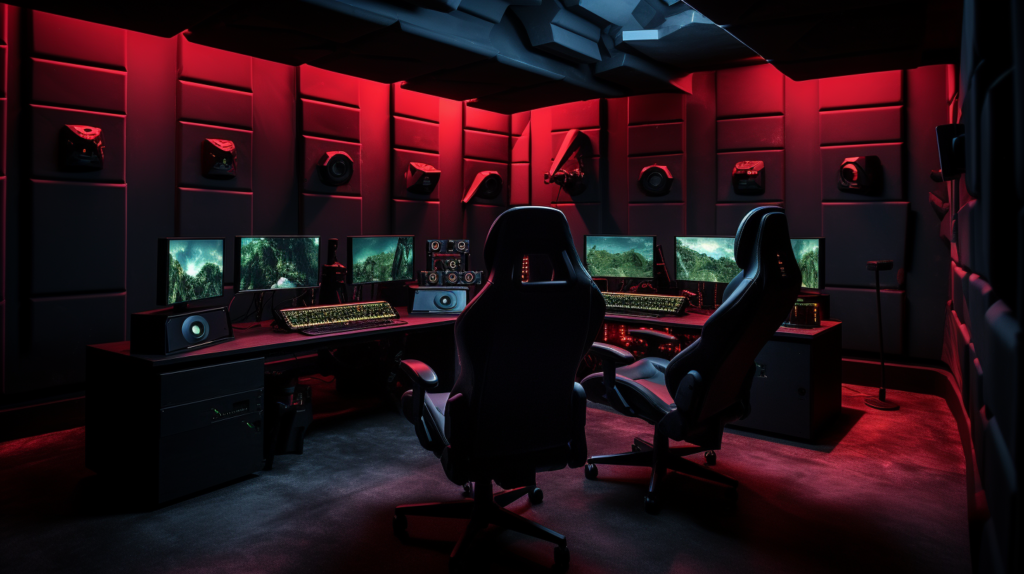
To contain those frustrating airborne sounds, installing noise damping panels made of Nitrile Butadiene Rubber on walls does the trick nicely.
First, carefully measure each wall length and height to calculate the total area that needs covered. Purchase enough 4×8 panels to cover the wall space plus extra to account for corners and edges.
For installation, use construction adhesive to mount the panels directly over existing drywall for a cleaner look.
Position the panels flush together side-by-side to avoid any open gaps between them. Gaps would allow airborne noise to penetrate through the barrier.
Covering the entire wall area is essential, so measure precisely to determine panel placement and the amount needed.
The soft, sound absorbent rubber material prevents loud voices, cheers, or video game sound effects from bouncing off the walls and escaping the room.
With the noise trapped, family members in adjacent rooms remain undisturbed.
Bare walls would reverberate sounds while these noise dampening panels contain everything within the four walls of the gaming zone.
Their noise blocking abilities create an isolated oasis free of exterior disturbances.
Soundproof Walls for Structure-Borne Noises
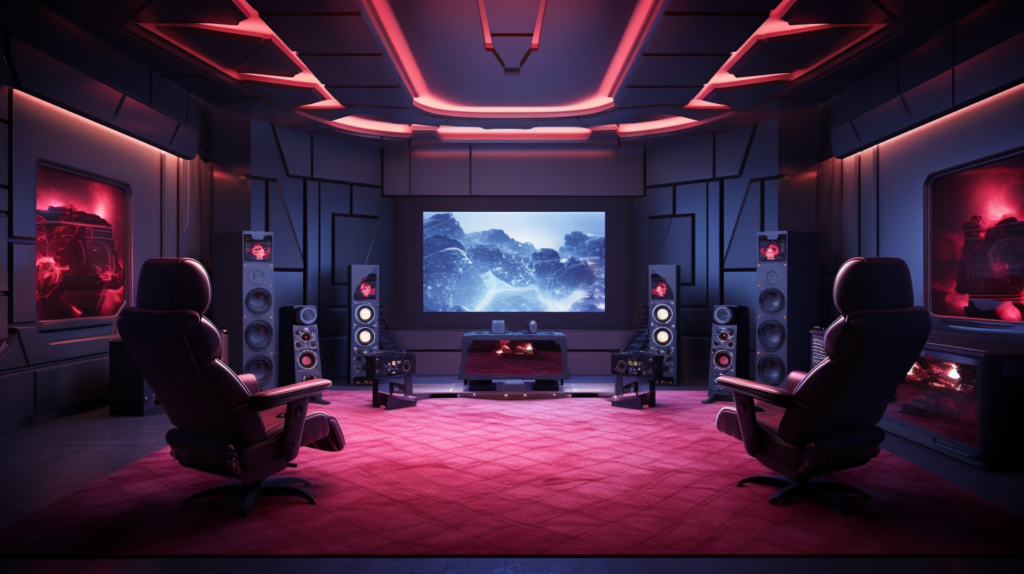
While panels absorb airborne noises, walls also need special treatment to block structure-borne vibrations from heavy footsteps, physical celebrations, and blaring subwoofers.
These rumbles easily transmit through walls, disturbing the peace throughout the home’s structure.
An effective soundproofing method involves first exposing the inner wall studs which requires removing any drywall or paneling currently installed.
Once exposed, sound dampening insulation like mineral wool can be inserted between the stud cavities. This noise-blocking material cuts down on vibration transmission from one room to the next.
Resilient channels are then attached horizontally across the exposed studs before installing a new layer of drywall overtop.
These channels create a decoupled inner wall separated from the main wall structure. This air gap absorbs vibrations along with the insulation, providing extra dampening and sound blocking abilities.
The doubled up drywall also increases mass which helps block structure-borne rumbles.
Combined together, this creates an inner soundproof wall perfect for containing the rowdiest gaming commotion inside the room.
Neighbors down the hallway will appreciate the peace and quiet thanks to top-notch construction.
Soundproof Ceiling for Airborne Noises
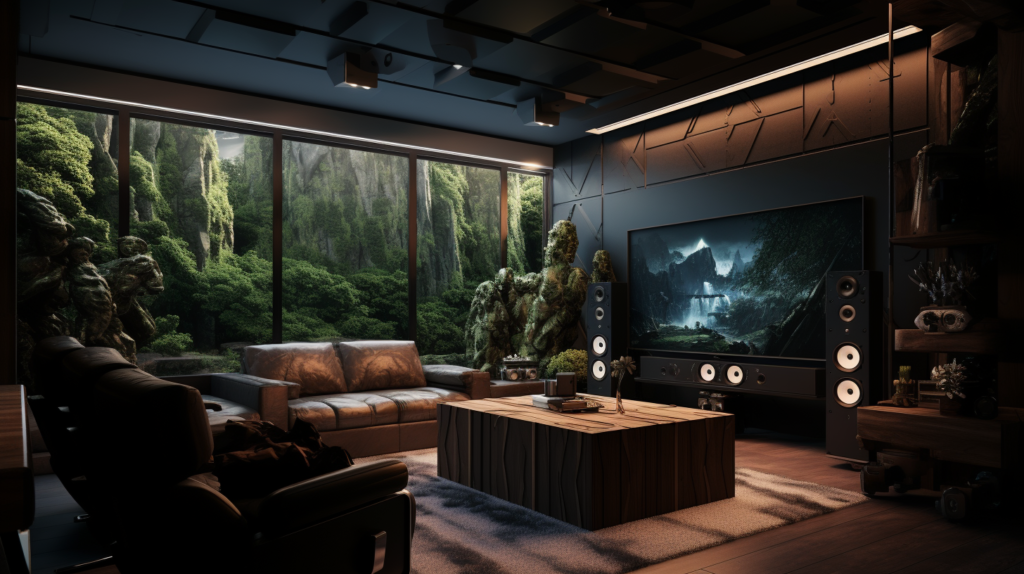
In addition to walls, gaming noise leaks easily through ceilings so those surfaces require consideration as well.
Conversations, gleeful yelling during victories, and character voices from video games floating upstairs to bedrooms is less than ideal.
Continue soundproofing efforts upward by installing those same trusty Nitrile Butadiene Rubber panels across the entire ceiling surface.
Measure from corner to corner to calculate square footage so you can purchase adequate panels to cover the space.
As on walls, use construction adhesive to install the panels flush together side-by-side without gaps. Any gaps would allow airborne noises like shouting and game sounds to travel freely upstairs.
The soft, sound-absorbent panels prevent this by trapping noises and blocking their transmission upward.
With a noise isolated ceiling, the downstairs fun and chaos remains downstairs. The rubber material dampens echoing from a bare unfinished ceiling as well, creating a muted gaming cave.
Leaving the ceiling bare turns it into one big amplifier blasting every shout, so those handy panels are a soundproofing essential.
Soundproof Ceiling for Structure-Borne Noises
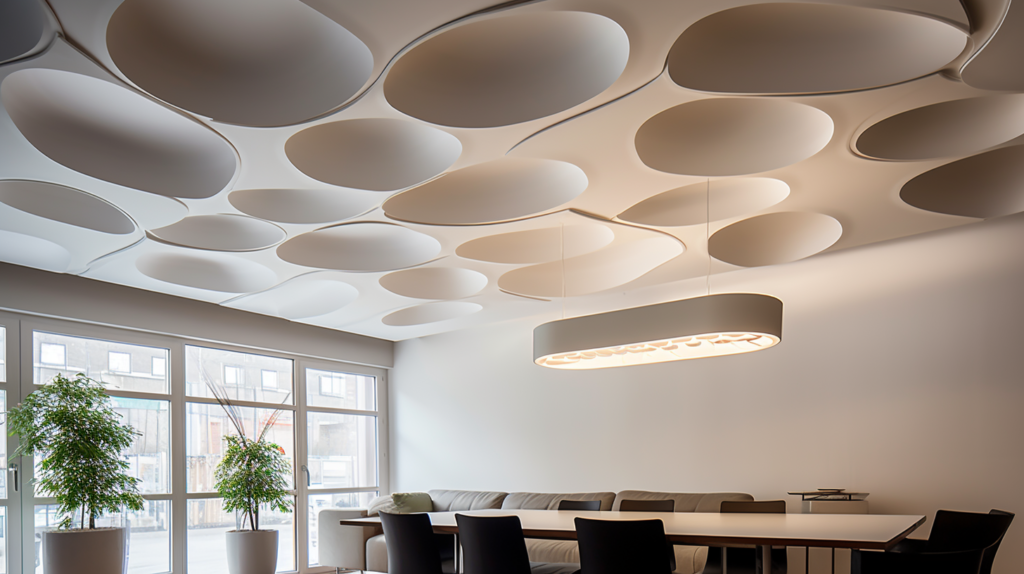
In addition to blocking airborne noises, gaming room ceilings must also address those pesky structure-borne impacts that rattle upstairs rooms.
Loud footsteps and jumping during celebrations creates vibrations that disturb household members on upper floors.
Stopping the transmission of these annoyances involves installing double drywall on the ceiling using those handy resilient channels mentioned for walls.
Leave a small gap between the insulated ceiling and adjoining walls before stuffing insulation like rock wool into the ceiling cavity.
The resilient channels work their magic once again, creating a decoupled inner ceiling that dampens vibrations.
The extra drywall layers also increase mass which helps block vibrations attempting to pass through. Finally, the dense insulation placed inside absorbs any remaining noise rattling around.
Combined together, this classic soundproofing sandwich blocks those rowdy stomps and celebrations from rattling upstairs bedrooms.
Neighbors above can sleep peacefully without hearing a peep from the secret gaming headquarters below.
Soundproof Floor for Structure-borne Noises
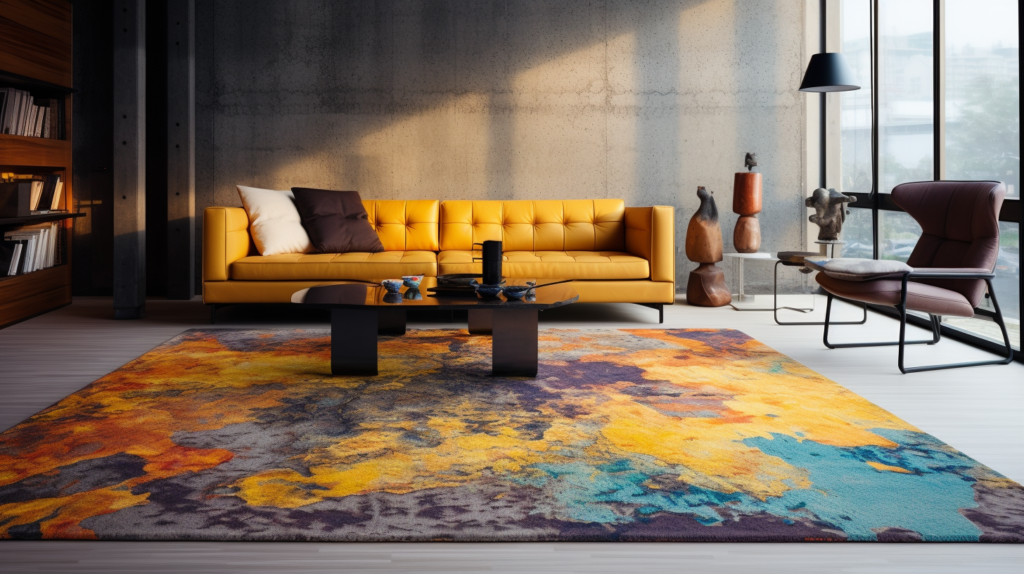
Low frequency vibrations caused by booming subwoofers, stomping feet, and jumping around emanate through floors most readily, disrupting downstairs rooms.
Preventing these annoying rumbles requires lifting the gaming room floor up and away from the base structure below.
Known as a floating floor system, first add a layer of dense foam pads or rubber pucks spaced evenly atop the concrete base.
These act as a cushion barrier and absorb vibrations. Next comes a vital layer of MLV (mass loaded vinyl) acoustic underlay which does most of the soundproofing work using its incredibly dense properties to block noise through the floor.
Finally install your finished floor surface atop the MLV, keeping it lifted up and suspended above the concrete foundation.
This isolates and decouples the floor above from the structure below so vibrations no longer transfer downwards to bother lower floors.
Loud foot stomps and heart-pounding subwoofer beats stay contained above thanks to this incredible floating floor technique.
Downstairs neighbors can enjoy undisturbed tranquility despite the secret party happening above their heads.
Soundproof Door for Noises
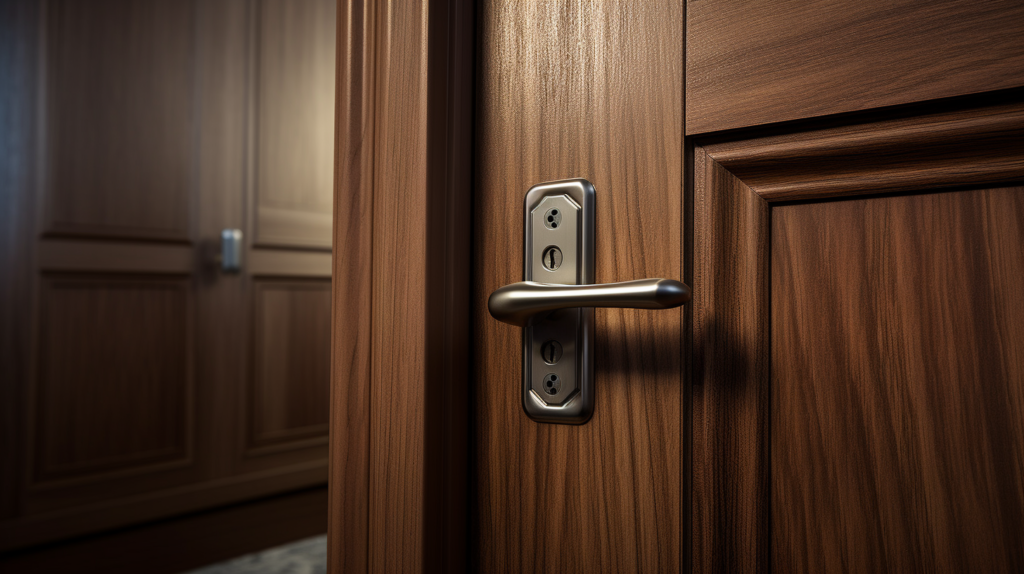
Even the most well-soundproofed surfaces can have all their hard work undone by overlooked openings like doors.
Prevent precious gaming commotion from sneaking out around door frames by sealing any cracks or gaps with acoustic caulk before installing the door.
Solid core doors made of heavyweight pressed wood or MDF work wonders, unlike flimsy hollow core doors that amplify sound.
Weatherstripping attached around the door frame coupled with door bottom seals also stop airborne and structure-borne noises from escaping underneath to Maintain the sanctity of your gaming headquarters by keeping the cacophony of battle cries and subwoofer shakes contained inside where they belong.
Escaping sounds ruin the intended isolation, so apply seals thoroughly for maximal effect.
For any adjoining rooms or hallways, the gaming din remains completely unheard thanks to uncompromising sealing.
Soundproof Windows for Noises
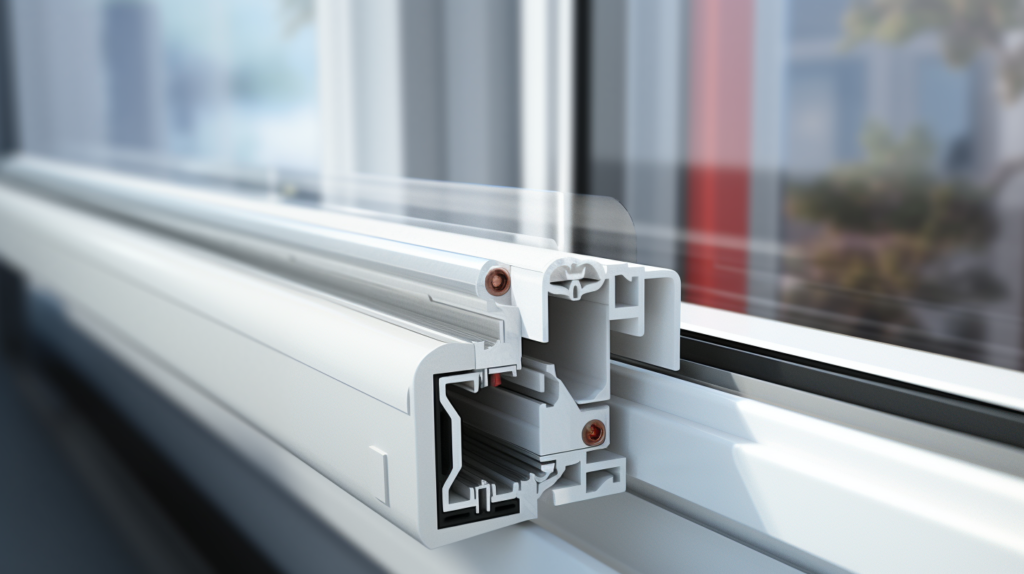
Overlooked windows can also lead to unwanted sound leakage issues if left unaddressed.
Having upstairs or downstairs neighbors hear every agonized multiplayer defeat or triumphant victory roars through thin windows is embarrassing.
Begin by sealing any cracks around window frames with acoustic caulk to prevent noise travel through those gaps.
If possible, install upgraded double or triple-pane windows which offer exponentially better noise reduction compared to single pane windows.
The extra glass layers and air gaps between minimize sound transmission beautifully.
For existing single pane windows that cannot get replaced, apply window plugs or insulation film to fill the window cavity instead of letting sounds filter through freely.
White noise machines in nearby rooms helps mask gaming noises leaking through imperfect windows as well. Addressing every potential sound leak path seals off the room completely.
Conclusion
Constructing the ultimate private gaming sanctuary in your home takes knowledge, patience and hard work.
But done properly, the end result is a blissfully soundproofed room ready for unrestrained gaming excitement.
Containing bothersome airborne and structure-borne noises requires addressing all surfaces with the right sound-absorbing and sound-blocking treatments.
Noise dampening rubber panels installed everywhere trap rowdy airborne shouts and cheers. Floating floor systems, doubled-up drywall and insulation handles those shaking structure-borne rumbles.
Sealing every possible gap and opening with caulk and weatherstripping also proves vital.
But the reward is a room where hardcore gamers can holler, stomp and blast subwoofers to their heart’s content without disturbing anyone else in the home.
Using the right soundproofing techniques allows building a secluded gaming lair perfect for unrestrained entertainment.
